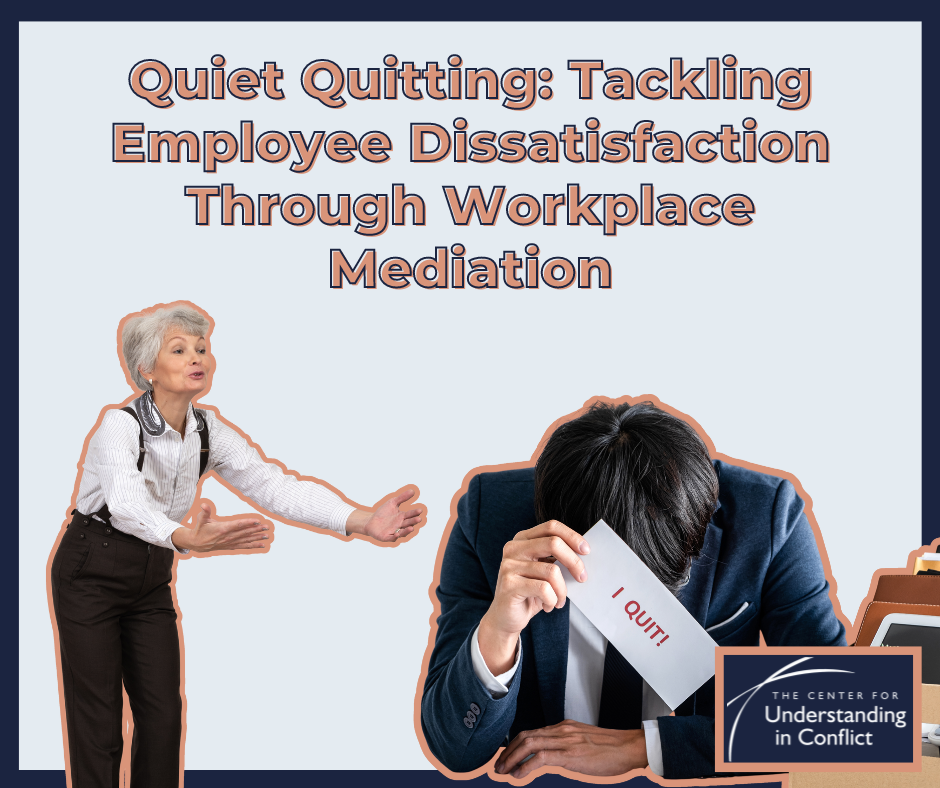
By Catherine Conner
Businesses and nonprofits, large and small, are struggling to keep their organizations running during a chaotic and difficult period of mass resignation, quiet quitting, customer and client dissatisfaction, and the ongoing challenges of adapting to new generational demands entering the workforce. There is some truth to the contributing factors of market forces and supply chain issues, but employees often cite job satisfaction as the most significant contributing factor to why they leave. But the reality is that not everyone leaves. Research suggests that most of the damage to an organization goes unseen, as conflict and division consume significant amounts of productive time, contribute to the disruption of growth and operational efficiency, stifle creativity, and turn high-impact team members into disillusioned job hunters.
Conflict resolution and mediation, typically understood through the lens of legal, civil, and divorce proceedings, are playing an increasingly important and prominent role in helping to resolve and address internal employee division and strife. From incompatible personalities to power struggles and interoffice politics, mediation offers a way forward in addressing the challenges of “the great resignation” while tackling the core roots of dissatisfaction that have long plagued the workplace. Mediation can provide a problem solving opportunity that doesn’t rely on punitive management decisions or intervention by a human resources department, which is often viewed as an agent of the company.
Whether you are involved in leading a small business or a Fortune 500 company, there is a process for establishing structures of trust and neutrality to remove roadblocks between employees and managers, companies, and clients that frustrate productivity and harmony within a team working toward the same goals.
Click here to Join Catherine Conner and representatives from Intel, SAP, and Roche for a roundtable discussion on September 22, 2022.
Learn why employees improve work relationships, feel understood and appreciated, and understand their coworkers better after experiencing the Understanding-Based Model as well as to hear about best practices for being a change-maker in your organization through workplace mediation.
